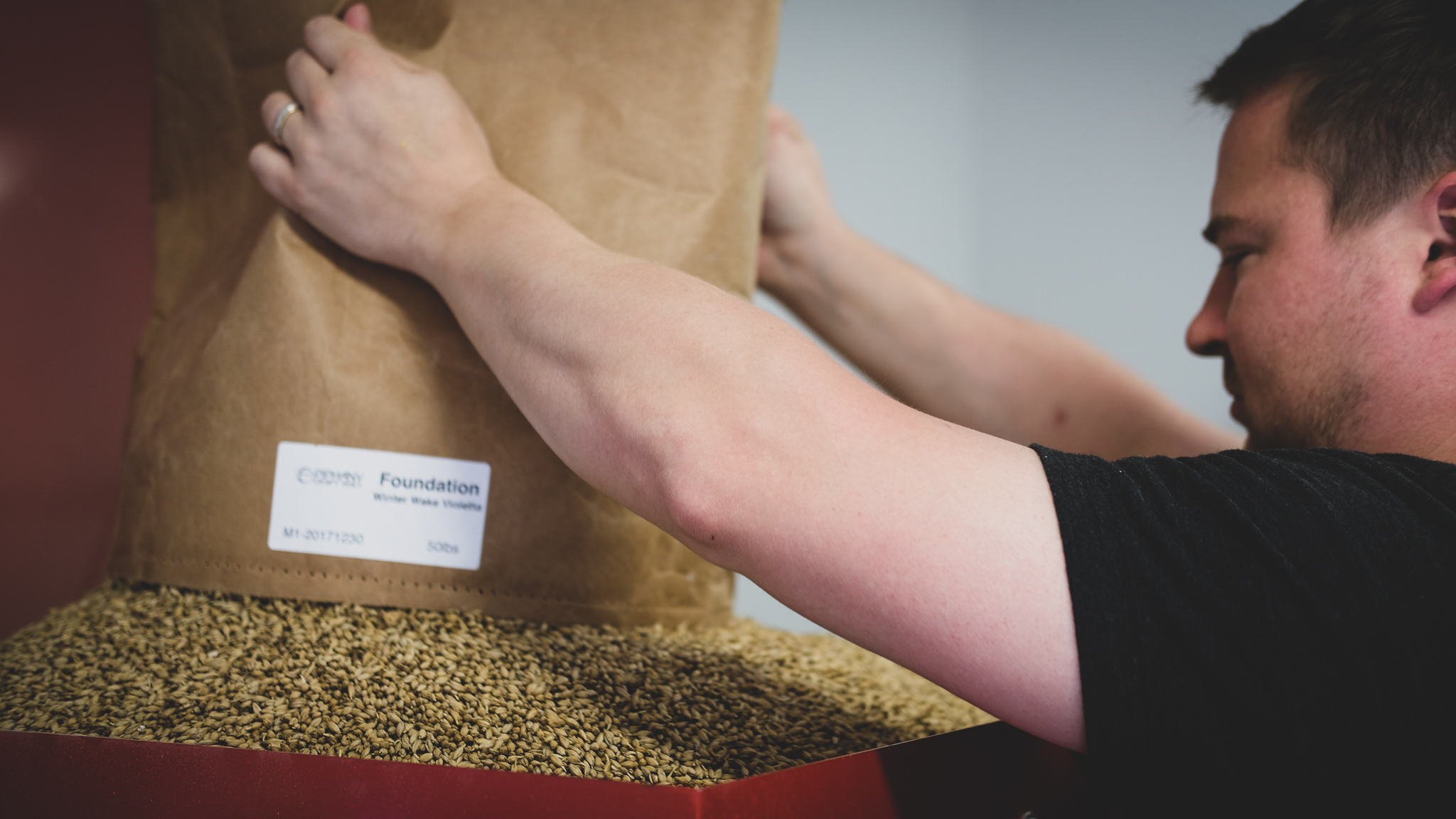By Aaron MacLeod, Hartwick College Center for Craft Food & Beverage
Achieving a proper crush in the brewer’s mill is critical to maximizing the performance of malt in the brewery. In cases where the mill is not adjusted correctly for a particular malt, a brewer can experience either poor mash efficiency or long runoff time due to an improper grist composition. The milling performance of the malt depends on many factors including the type, size, hardness, and friability of the kernels.
Grain kernel size will vary by variety and by crop year. It is important to remember that the plumpness alone is not a good measure of the average kernel size. Rather, it is a measure of the distribution of kernel sizes. Consider the kernel size assortment of the two malts below:
| > 7/64” | >6/64’ | > 5/64” | < 5/64” | |
| Malt A | 86.2 | 12.3 | 1.4 | 0.1 |
| Malt B | 63.3 | 34.2 | 2.4 | 0.1 |
Both of these malts have high plumpness (>96% of the kernels retained in total over the 6/64” sieve), but Malt B has a smaller proportion of kernels larger than 7/64”, indicating a smaller average kernel size.
A 2-roller mill is the most basic, entry-level model of mill used in many smaller craft breweries. With this type of mill, an adjustment to the ‘mill gap’ can be made to optimize the brewing performance of your malt based on the grist particle size analysis. You can purchase the required mesh sieves for grist size analysis from Seedburo.com. Here are the required sieves and part numbers:
| Part # | Description |
| 14BB8H | 14 Mesh 8″ Brass half height |
| 30BB8H | 30 Mesh 8″ Brass half height |
| 60BB8H | 60 Mesh 8″ Brass half height |
| CB8 | Brass Cover 8″ |
| PB8H | Brass Bottom Pan 8″ |
Procedure for Grist Analysis
- Stack the three sieves, Nos. 14, 30, & 60 in order with sieve No. 14 on top and sieve No. 60 on the bottom. Place the bottom pan under sieve No. 60.
- Obtain a sample of ground malt for analysis and reduce it to 100 g by splitting or dividing.
- Place the 100g sample of malt grist on the top of sieve No. 14, cover, and sieve for 3 min by sliding back and forth along a smooth surface, traveling 18 inches one way, and then reverse the direction (total cycle time 1.0 sec).
- After each 15-sec interval, tap the pan and sieve stack sharply against the tabletop.
- Collect, weigh and record the net weight of the material remaining in each sieve to the nearest 0.1 g.
- Calculate the percentage of malt grist retained for each fraction by dividing the weight of each fraction by the sum of all of the fraction weights and multiply by 100.
Grist particle size is about achieving a balance between extraction efficiency and run-off time. Smaller particles will yield higher extract but also result in longer lautering times and vice versa. Here is some general guidance:
| Mill Setting | Retained % | |||
| 14 | 30 | 60 | pan | |
| Coarser | 75 | 15 | 5 | 5 |
| Normal | 50 | 30 | 10 | 10 |
| Finer | 25 | 25 | 30 | 20 |
A more detailed presentation on this topic by Bob Hansen from Briess can be found here.


